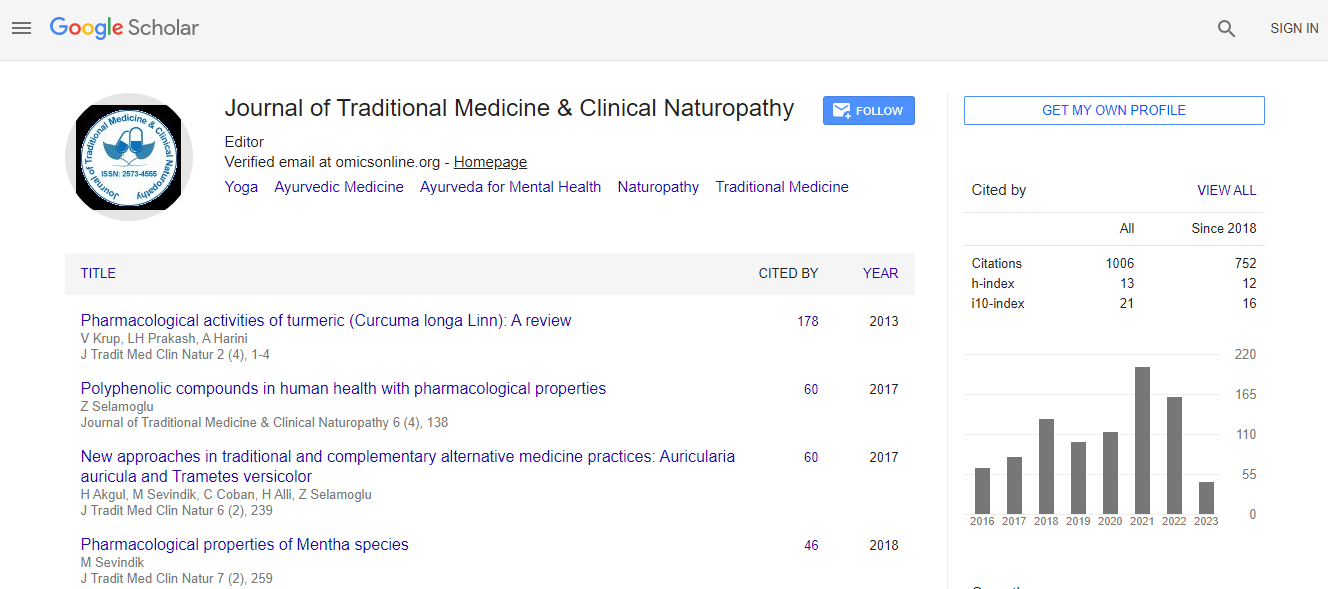Review Article
Fallopia japonica: Bioactive Secondary Metabolites and Molecular Mode of Anticancer
Mahmoud Zaki El-Readi1,2*, Safaa Yehia Eid1,3, Hiba Saeed Al-Amodi1 and Michael Wink3*
1Department of Biochemistry, Faculty of Medicine, Umm Al-Qura University, Makkah, K.S.A
2Department of Biochemistry, Faculty of Pharmacy, Al-Azhar University, 71524 Assiut, Egypt
3Institute of Pharmacy and Molecular Biotechnology, Heidelberg University, Im Neuenheimer Feld 364, 69120 Heidelberg, Germany
- Corresponding Author:
- Dr. Mahmoud Zaki El-Readi
Department of Clinical Biochemistry
Faculty of medicine, Umm Al-Qura University
Abdia, Makkah, Saudia Arabia
Tel: +966-25270000/ 4347
Fax: +96625270000/4319
E-mail: mzreadi@uqu.edu.sa
Dr. Michael Wink
Institut für Pharmazie und Molekulare Biotechnologie
Universität Heidelberg, Im Neuenheimer Feld 364, 69120 Heidelberg, Germany
Tel: +49 6221 54 4880
Fax: +49 6221 54 4884
E-mail: wink@uni-hd.de
Received Date: September 19, 2016; Accepted Date: October 12, 2016; Published Date: October 17, 2016
Citation: El-Readi MZ, Eid SY, Al-Amodi HS, Wink M (2016) Fallopia japonica: Bioactive Secondary Metabolites and Molecular Mode of Anticancer. J Tradi Med Clin Natur 5:193.
Copyright: © 2016 El-Readi MJ, et al. This is an open-access article distributed under the terms of the Creative Commons Attribution License, which permits unrestricted use, distribution, and reproduction in any medium, provided the original author and source are credited.
Abstract
Traditional medicinal plants are a large source of natural anticancer compounds that might serve as leads for the development of novel drugs. In recent years, the scientific community in the Western world has recognized the potential of natural products, used in Traditional Chinese Medicine (TCM). Since ancient times Japanese knotweed (Fallopia japonica), has been utilized in many TCM herbal preparations as anti-cancer agent. F. japonica (FJ) is known to produce a series of bioactive secondary metabolites, including anthraquinones, stilbens, tannins, lignans, anthocyanins, phenethyl alcohols, sterols, and essential oils. Resveratrol (a stilben) and emodin (an anthraquinone) are the major active ingredients of FJ. The anticancer activity of both compounds has various molecular modes of action and mechanisms through their ability to modulate the proliferation, apoptosis, cell cycle, growth factors, protein kinase C (PKC), NF-kappa B (NF-κB), and mitogen-activated protein kinase (MAPK) signaling cascades. This review presents an overview of the secondary metabolites of F. japonica and anticancer activities of the extract and main active principles, resveratrol and emodin. The possible molecular targets and potential chemopreventive effects are discussed.

 Spanish
Spanish  Chinese
Chinese  Russian
Russian  German
German  French
French  Japanese
Japanese  Portuguese
Portuguese  Hindi
Hindi 
